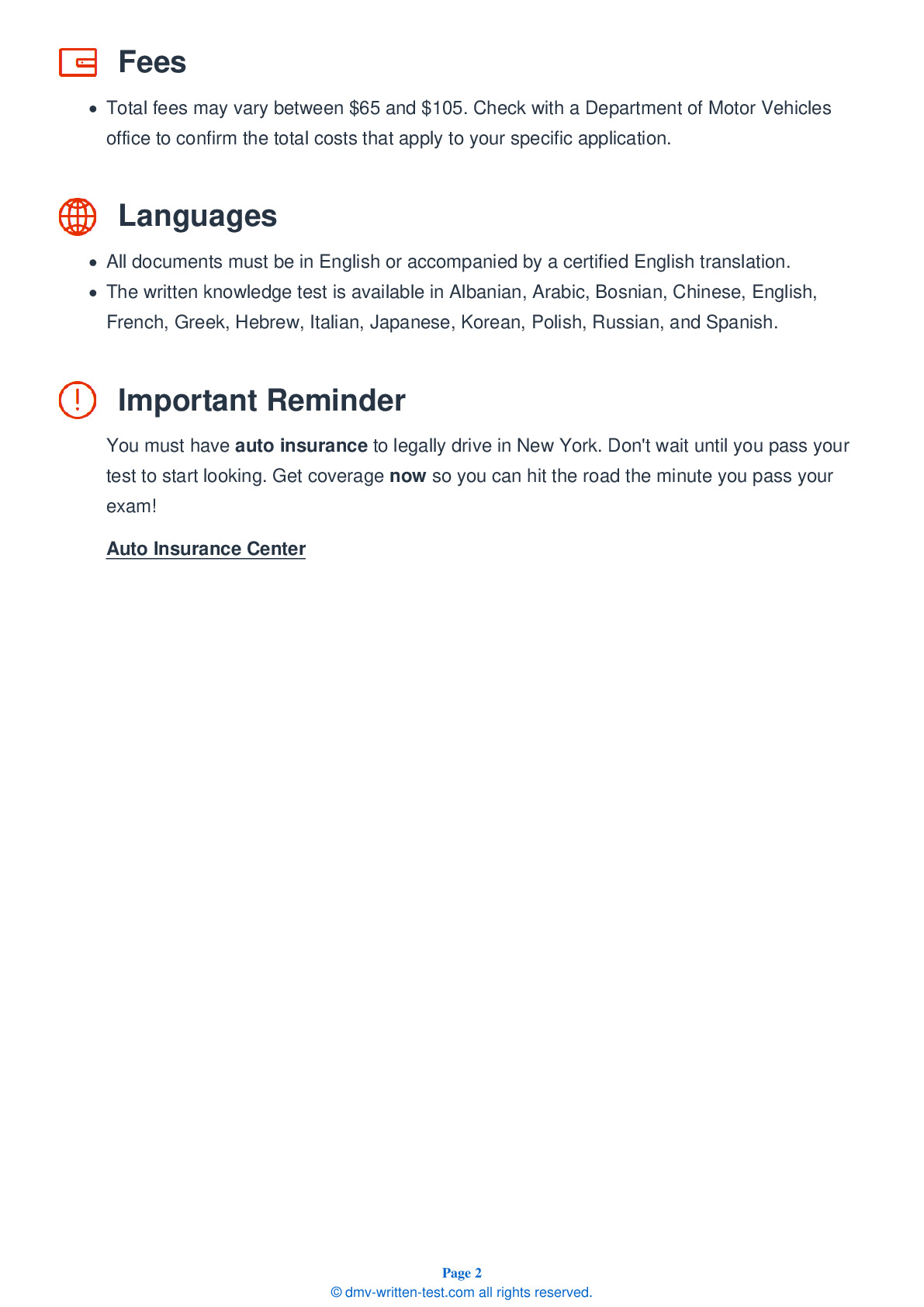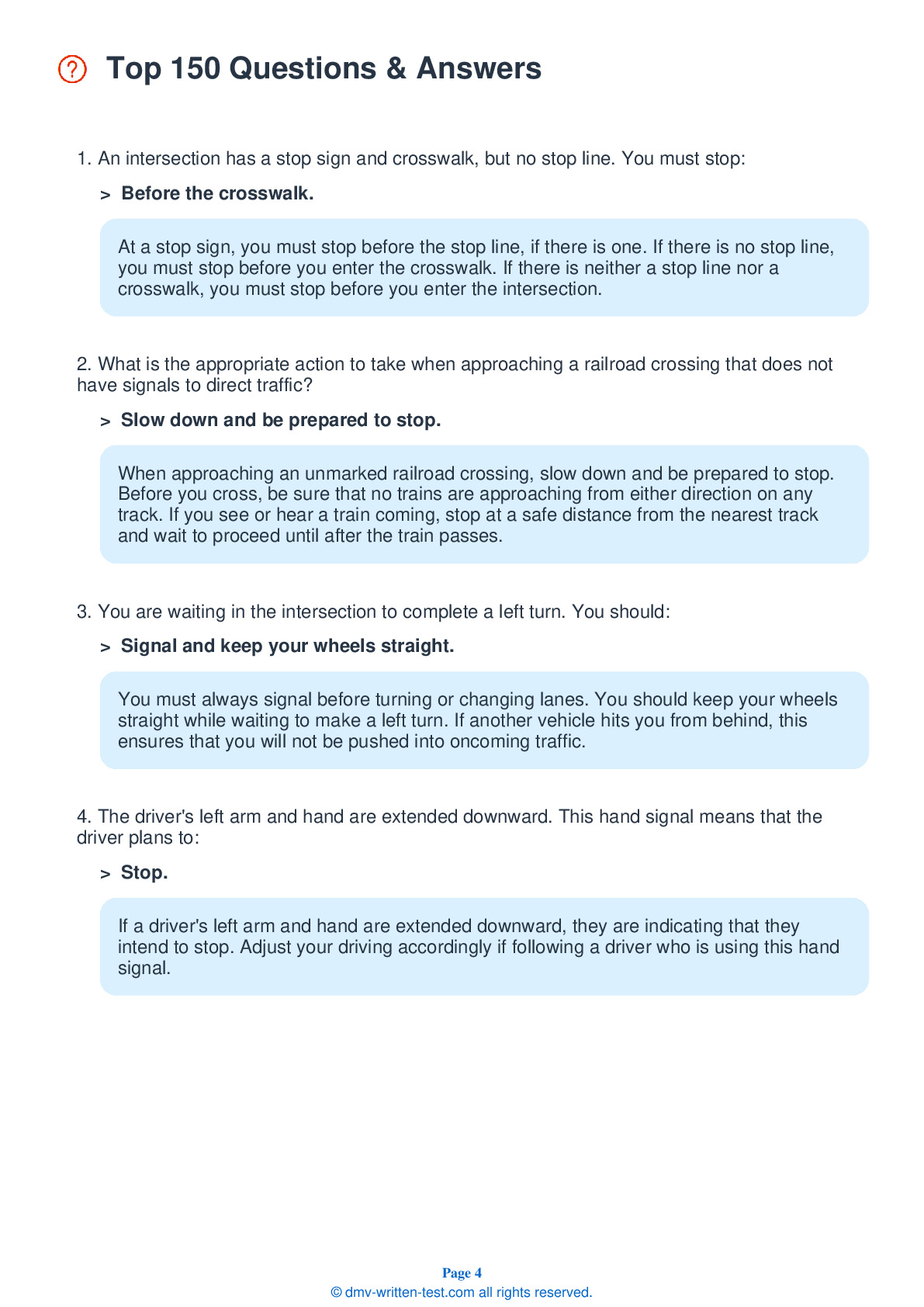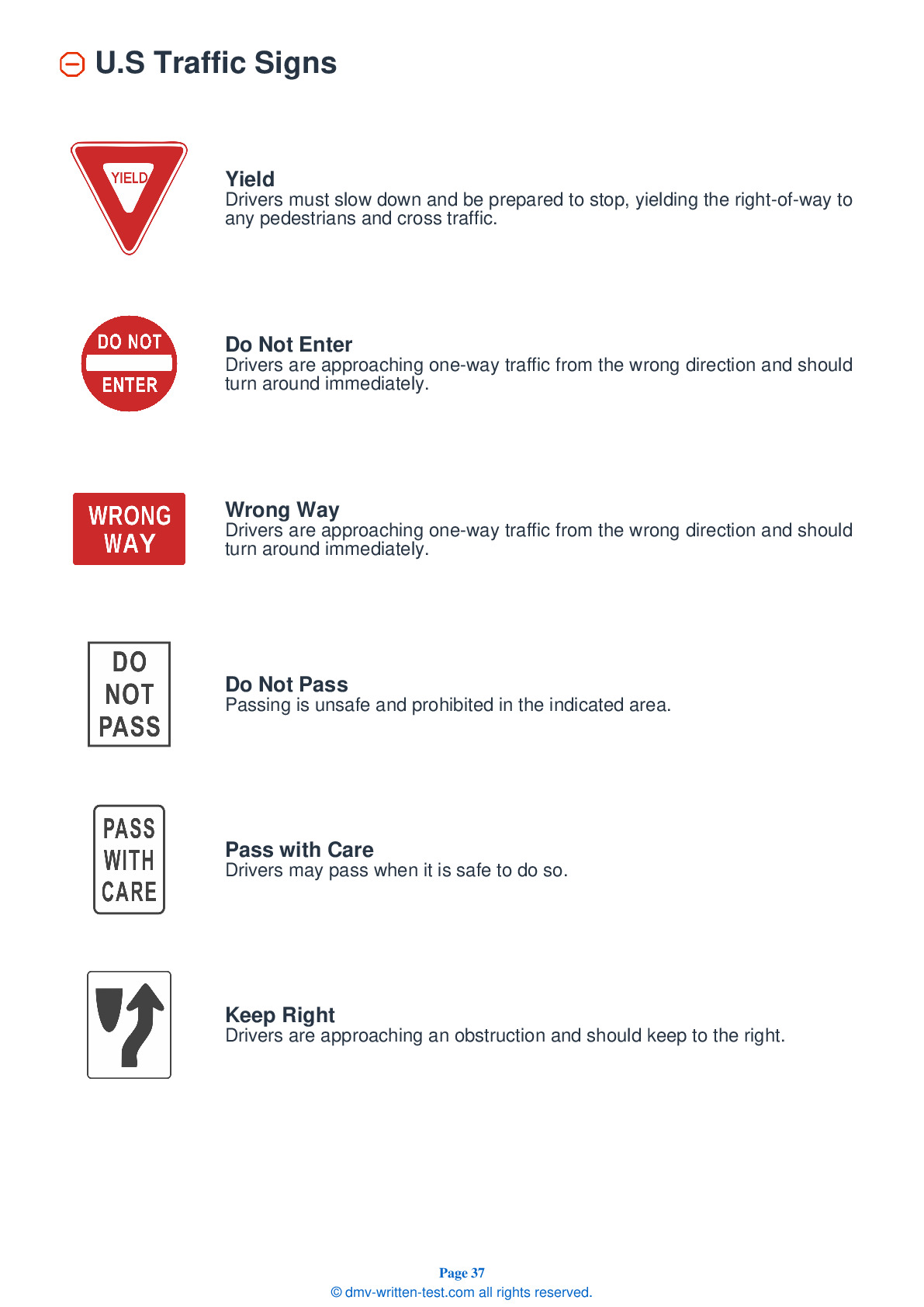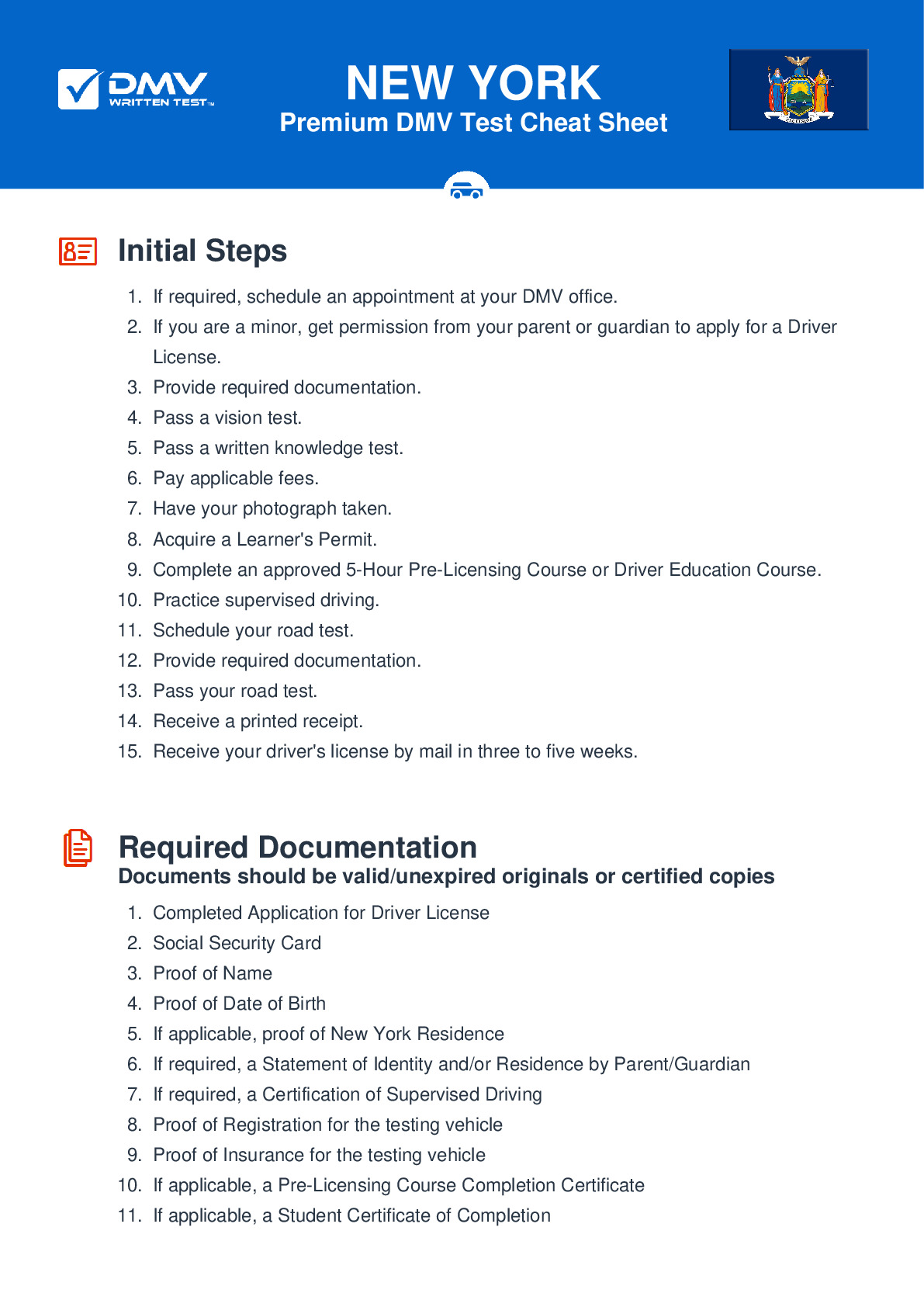2025 New York Permit Test 15
The following questions are from real DMV written tests. These are some of the actual permit questions you will face in New York. Each permit practice test question has three answer choices. Select one answer for each question and select "grade this section." You can find this button at the bottom of the drivers license quiz. For a complete list of questions and answers for New York please visit https://cheat-sheets.dmv-written-test.com/en/new-york/car.
Number of Tests
Number of Question
Passing Score
1. You have the right-of-way when you are:
Explanation
A driver who enters a traffic circle or rotary must yield the right-of-way to drivers already in the circle. Vehicles entering a roadway from a driveway must yield the right-of-way to pedestrians and to vehicles already in the road. When leaving a parking space, you must yield to oncoming traffic.
2. You want to turn right at the next intersection. You should begin to use your turn signal:
Explanation
The law requires you to signal a turn or lane change with your mechanical turn signals or hand signals at least 100 feet in advance.
3. You may never park:
Explanation
It is illegal to park, stop, or stand within a crosswalk. Parking is prohibited within 15 feet of a fire hydrant.
4. At dusk or on overcast days, you should:
Explanation
At dusk or on overcast days, you must turn on your headlights. Dim your lights to their low beam setting when within 1,000 feet of an approaching vehicle and when within 500 feet of a vehicle that you are following. When driving in poor weather, always use your low beams.
5. The maximum posted speed limit should be driven only:
Explanation
The posted maximum speed limit is the fastest legal speed you can travel on a road under ideal conditions. It is safest to drive at the same speed as surrounding traffic, up to the maximum speed limit. Maintaining a safe speed at all times is a responsibility shared by all motorists.
6. A solid yellow line on your side of the centerline means:
Explanation
Solid yellow lines on two-lane roads indicate zones where passing is prohibited. If a solid yellow line appears next to a broken yellow line, drivers in the lane nearest to the solid yellow line may not pass. In some instances, both yellow lines will be solid, indicating that it is not safe to pass from either direction.
7. You may park or stop along the shoulder of the freeway:
Explanation




